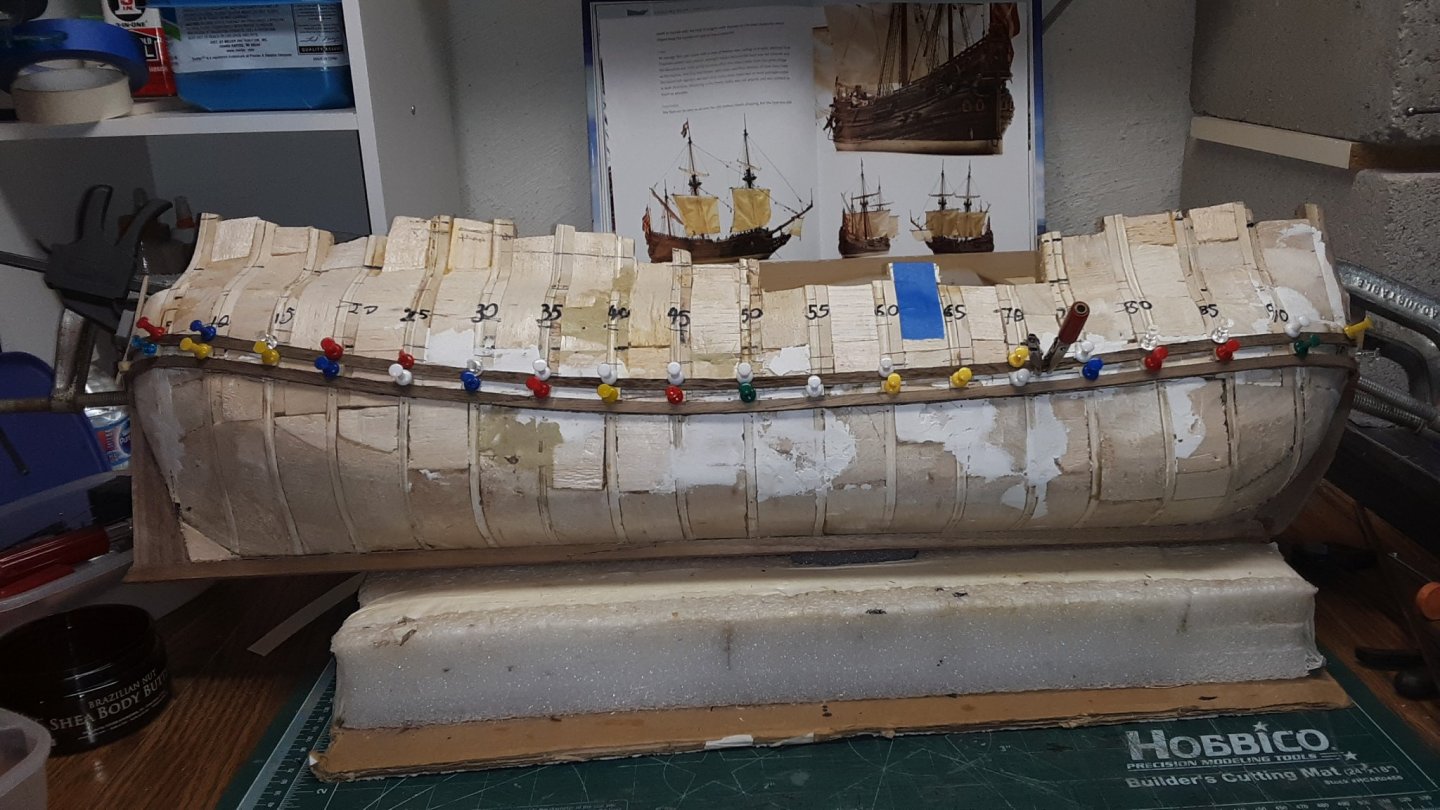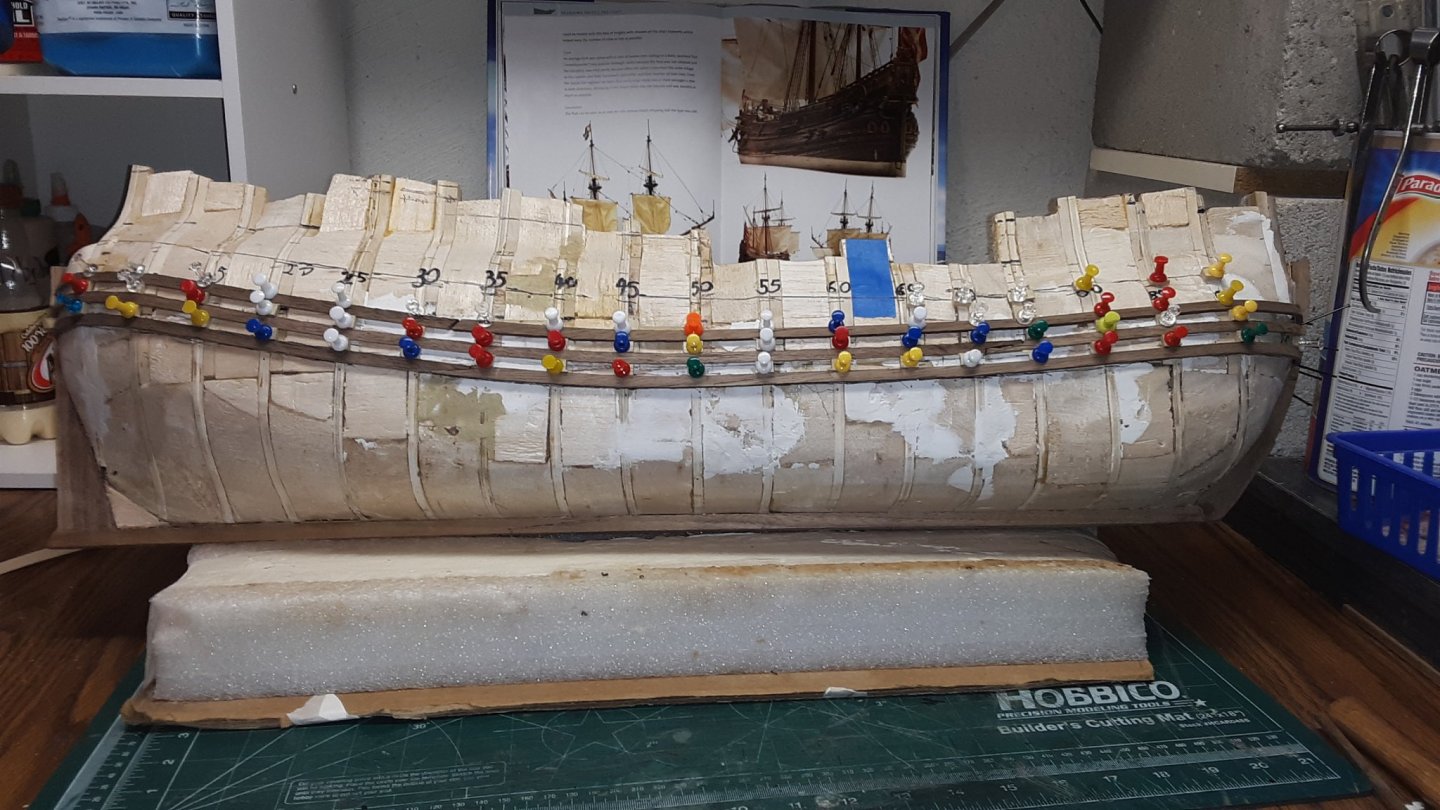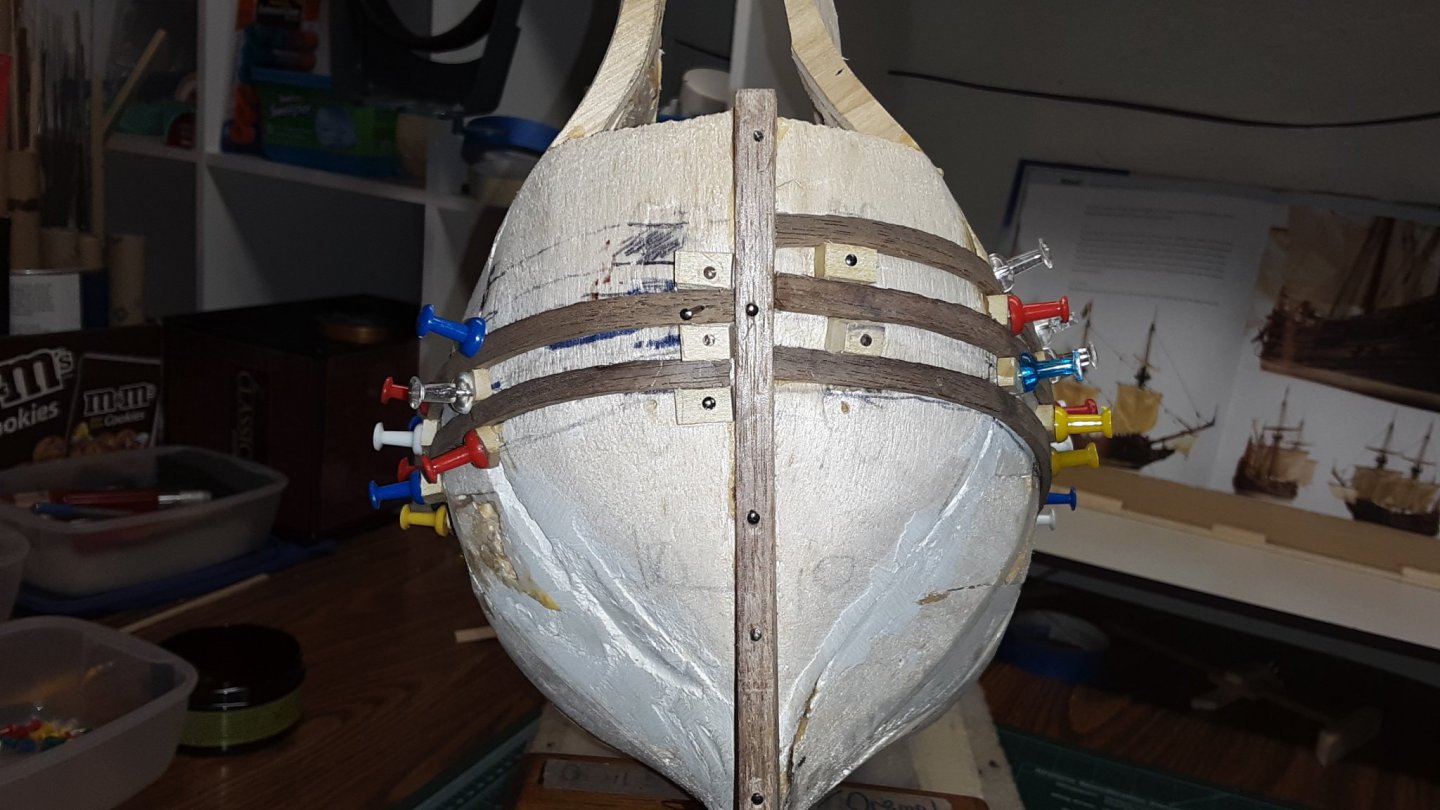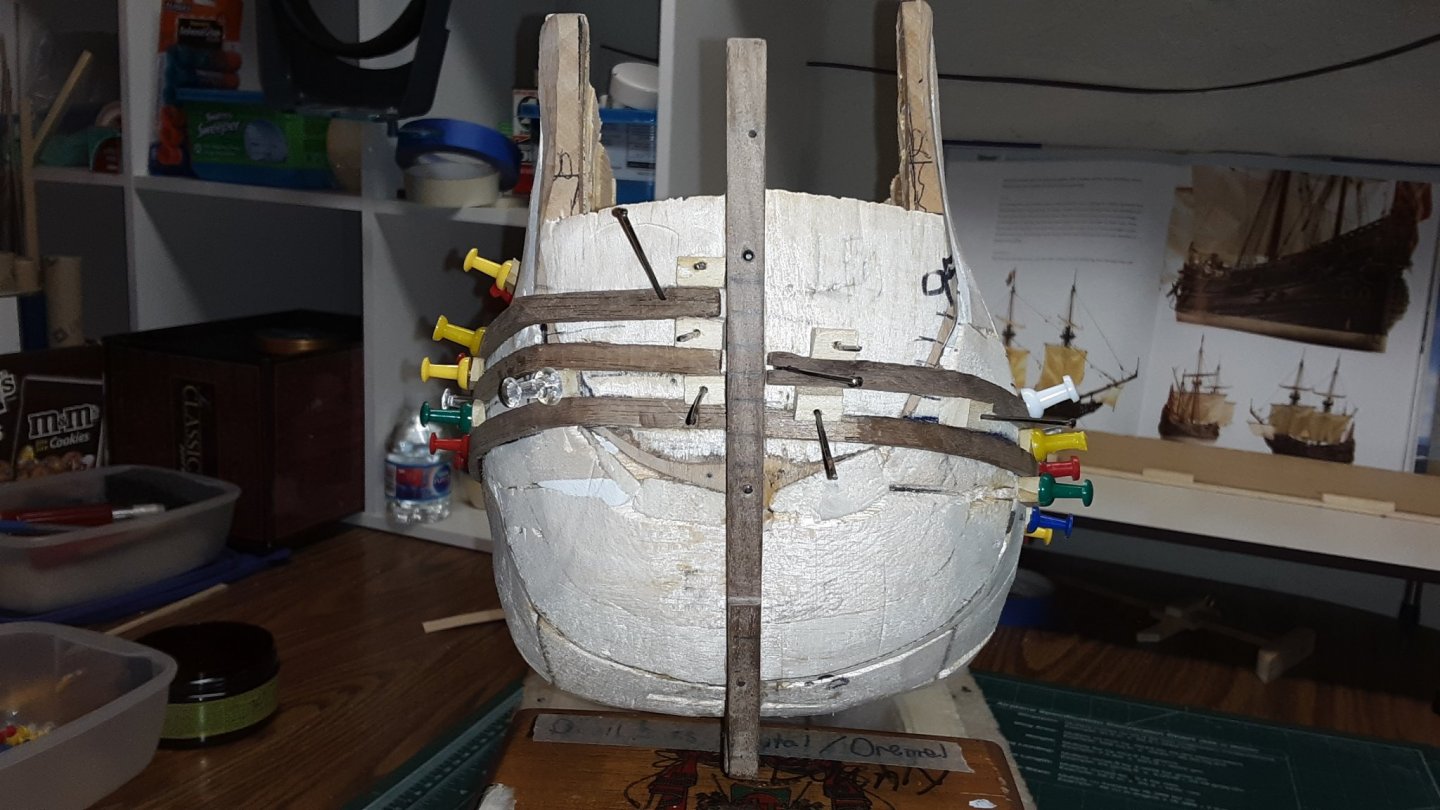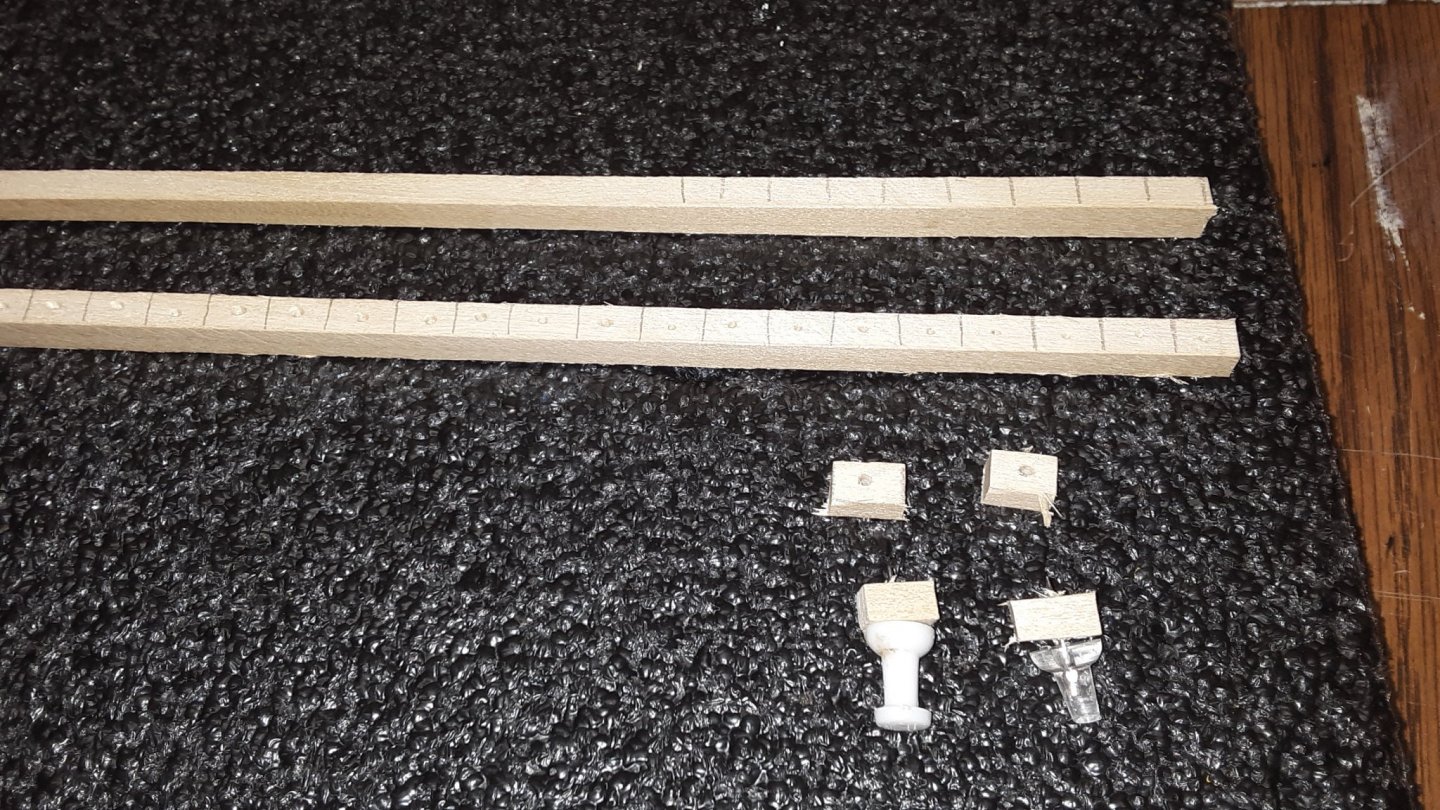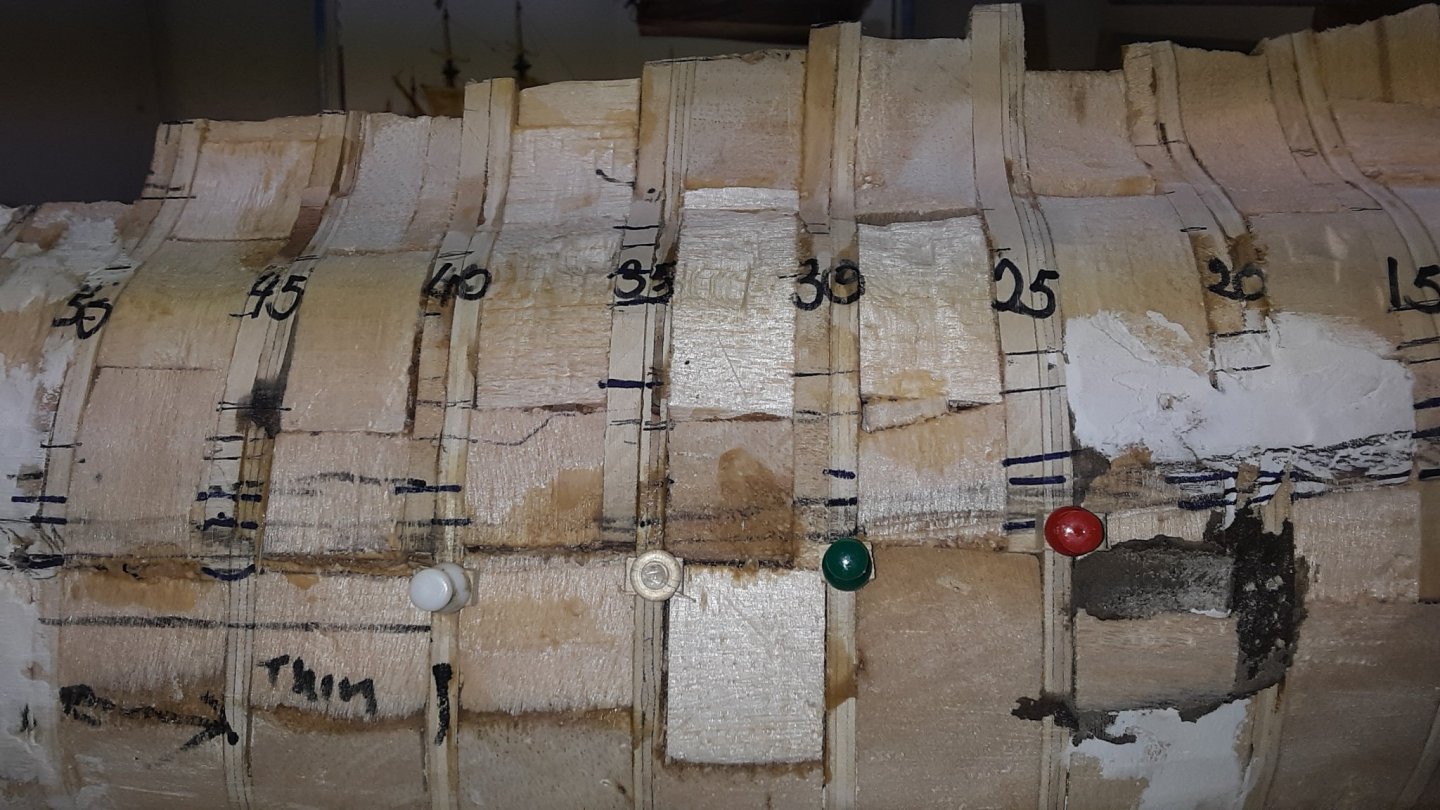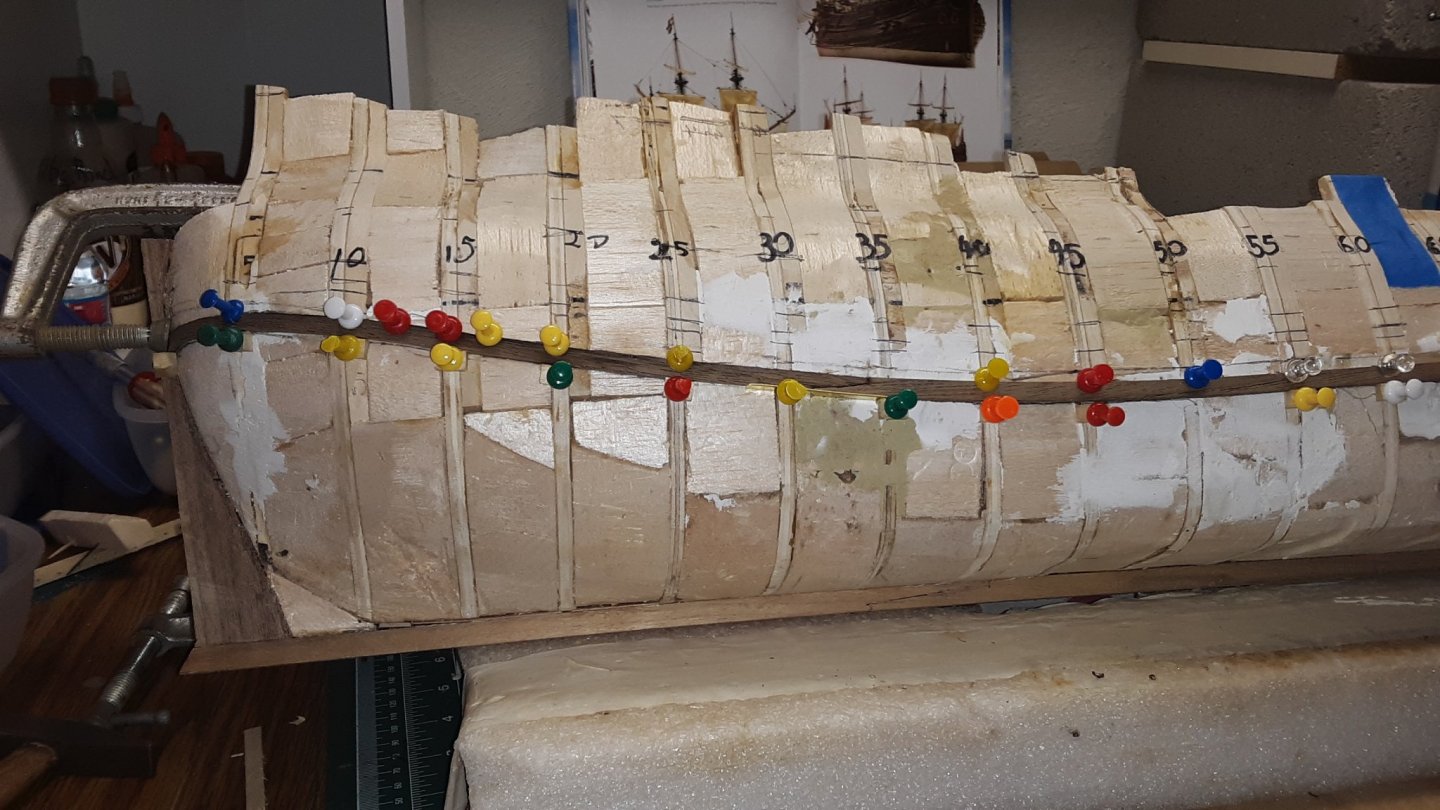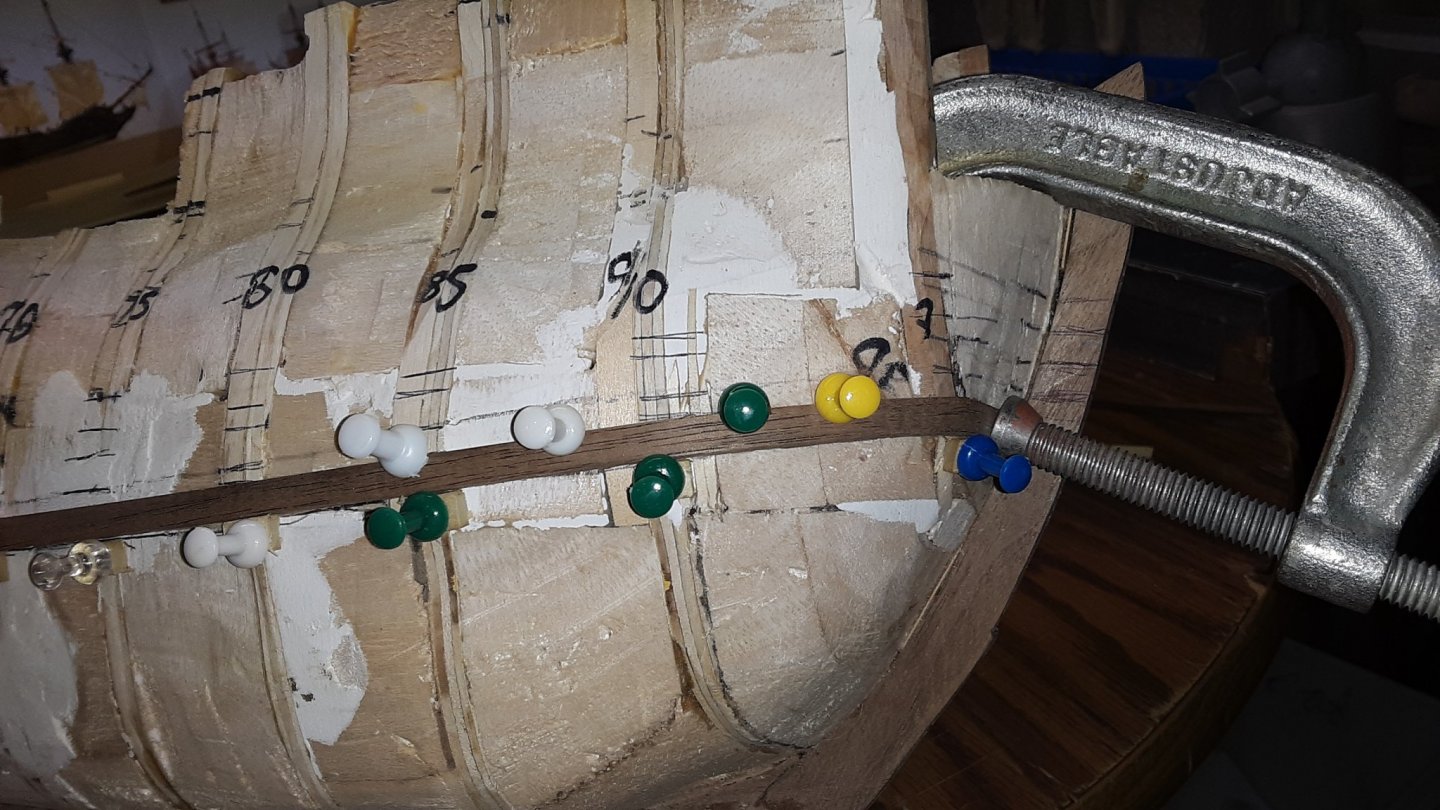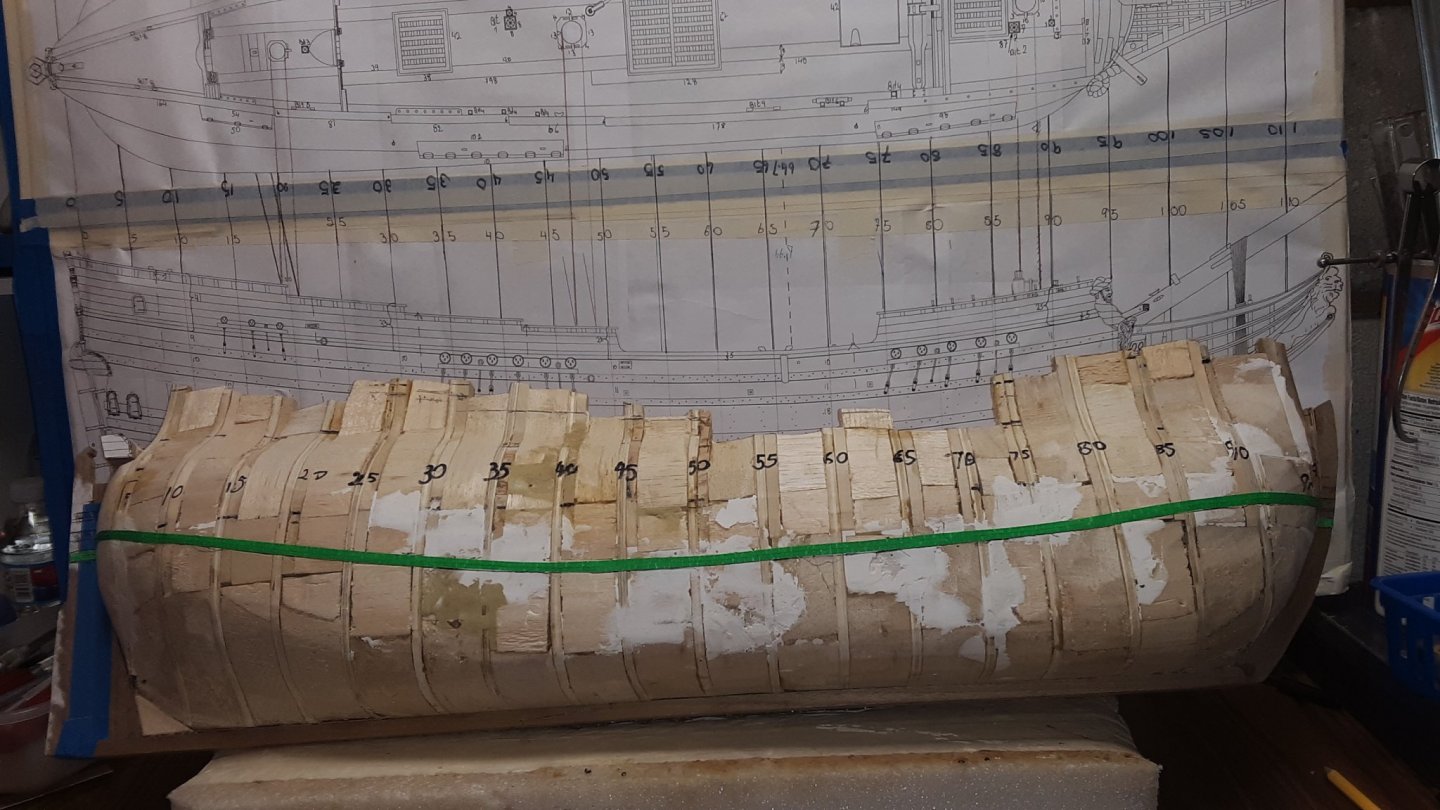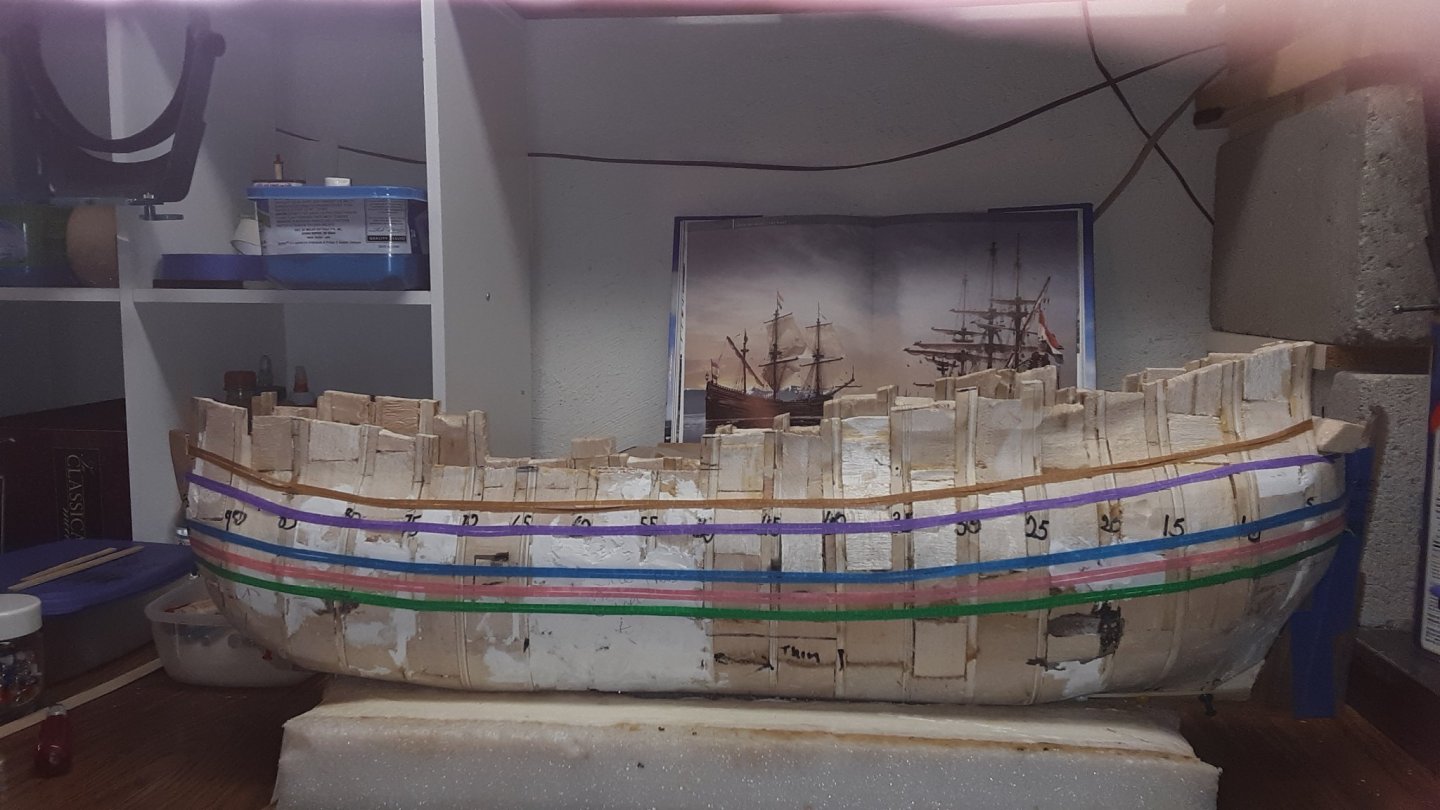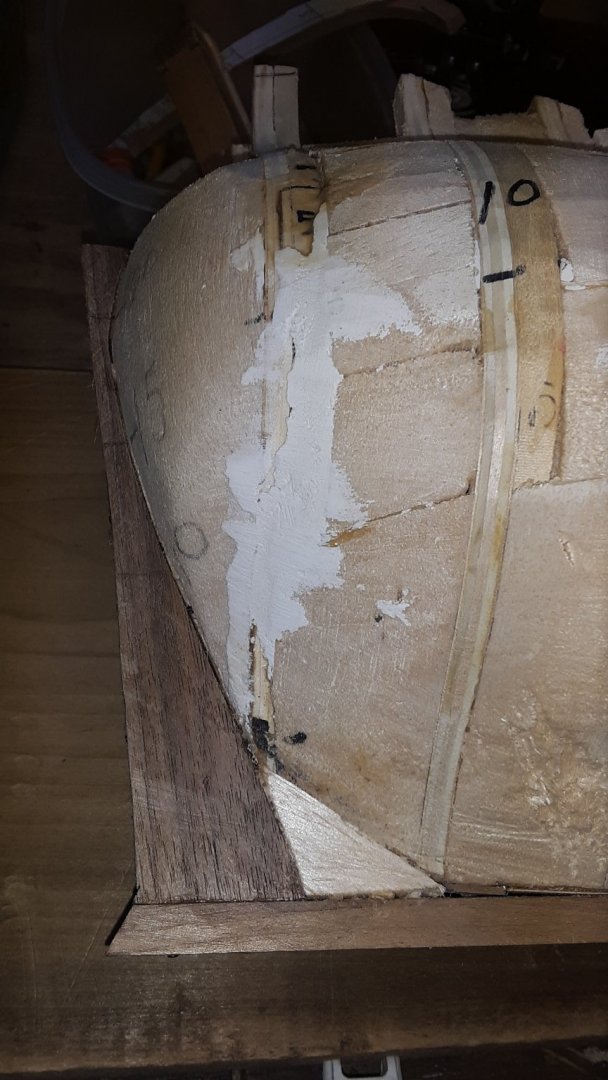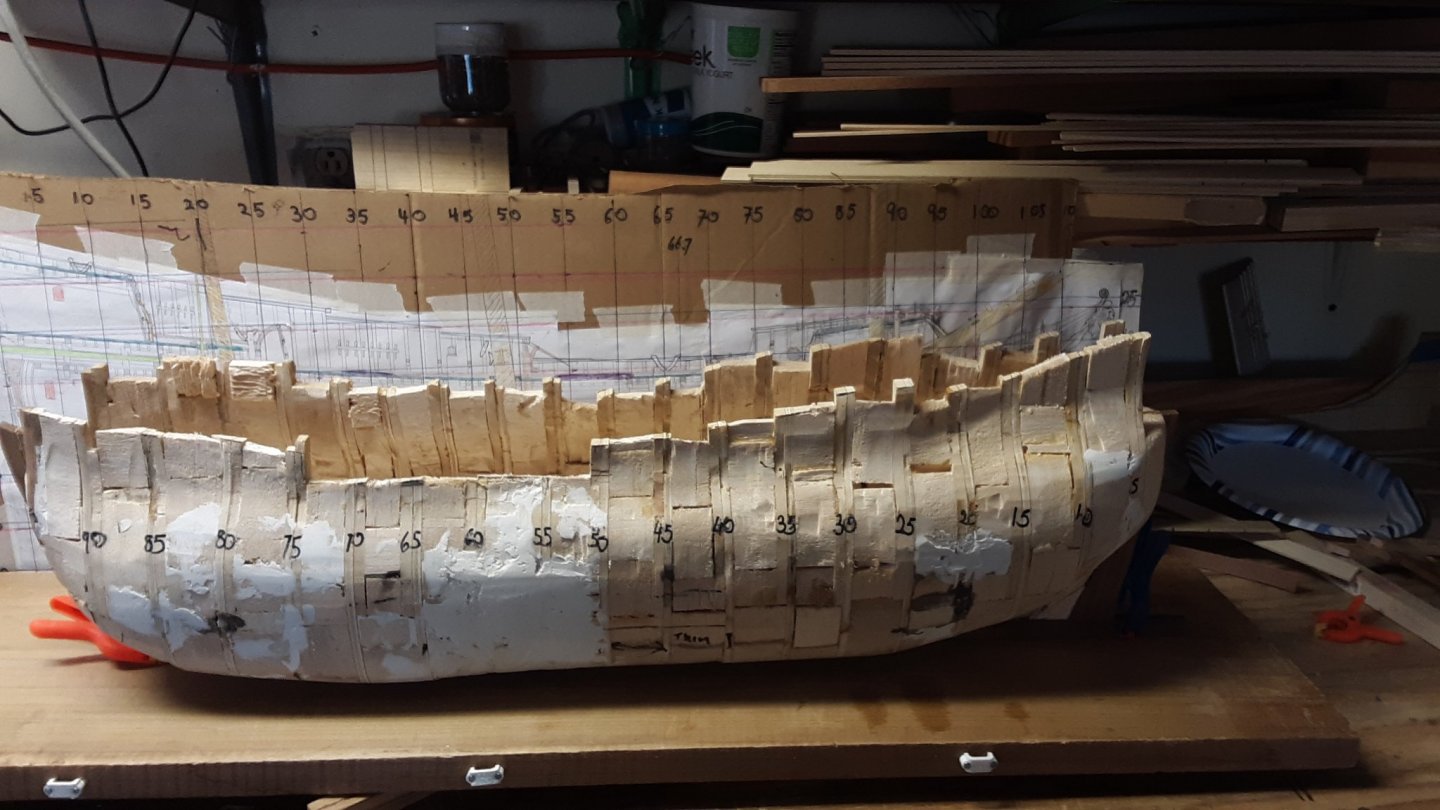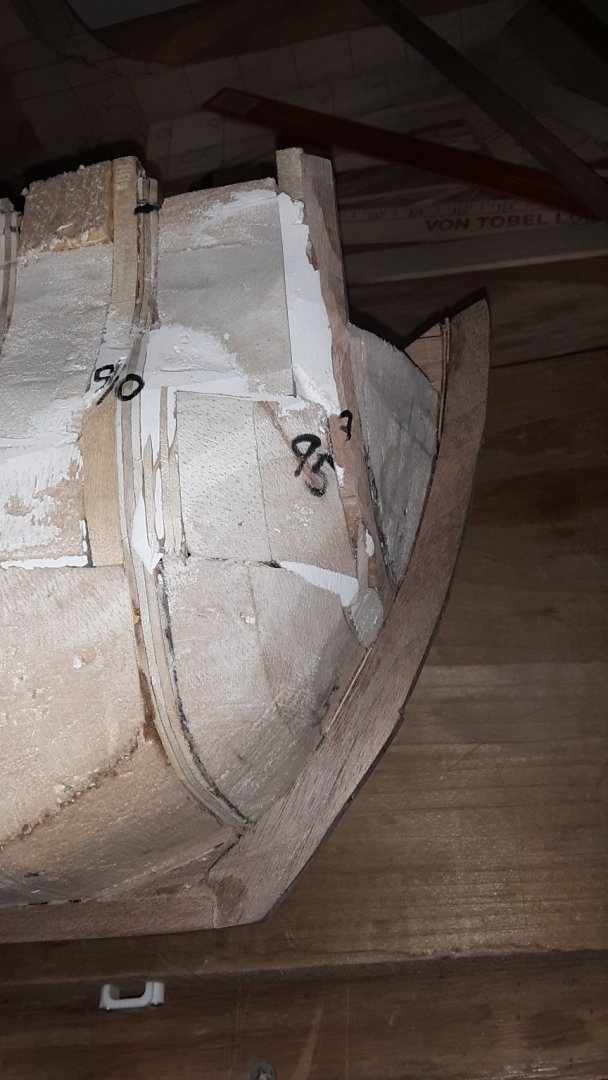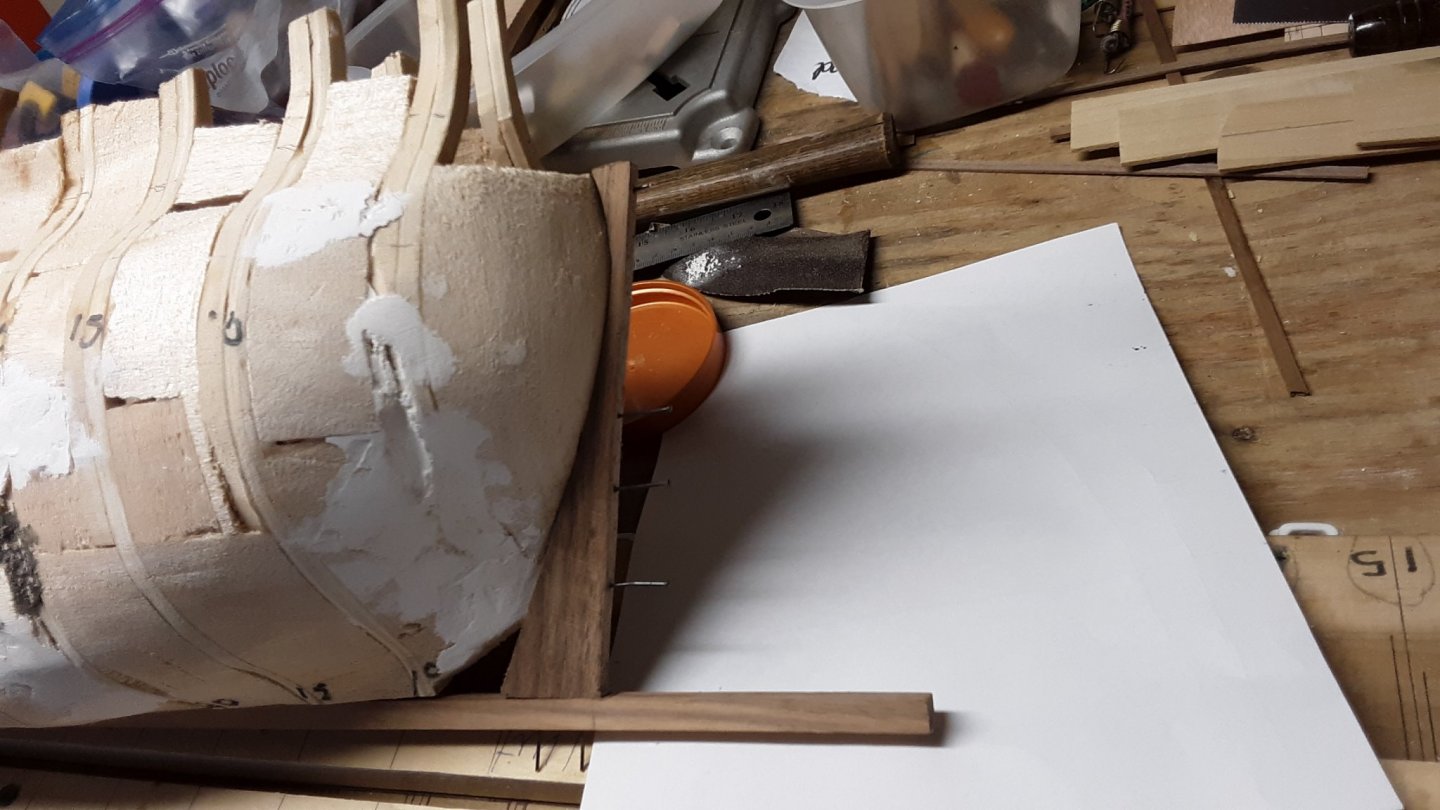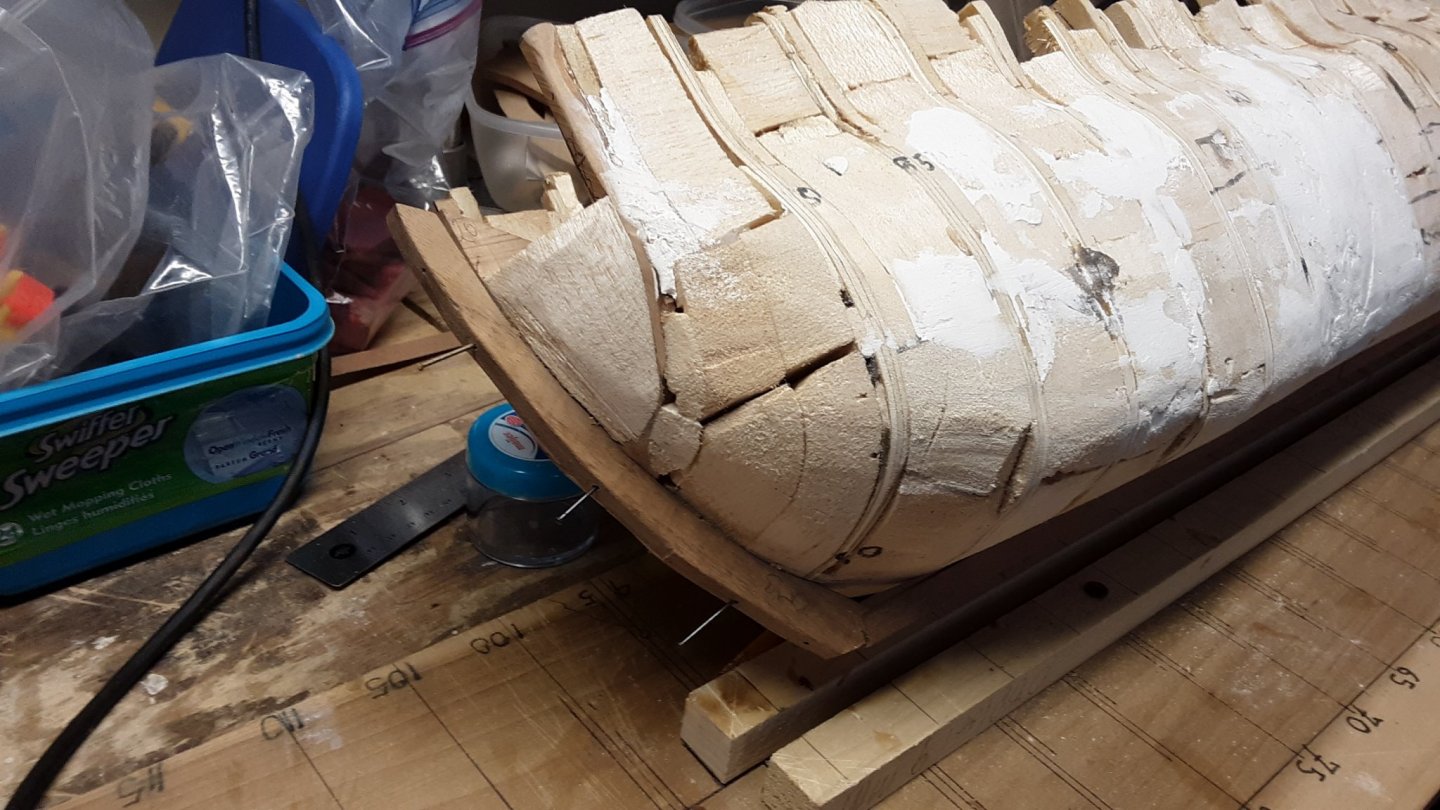-
Posts
1,735 -
Joined
-
Last visited
Content Type
Profiles
Forums
Gallery
Events
Everything posted by flying_dutchman2
-
Installed more wales on the hull. There are 5 wales on each side. Three wales equally spaced. 2 wales equally spaced. Stern Bow Wales: There will be 3 strips of 2mm thick glued on top of each other. Each wale will be 6mm thick and the wood is walnut. The rest of the ship: 1st planking layer is basswood and second layer is cherry. What I like about cherry is that it darkens over time. Last month at the woodworkers club meeting I was given lots of walnut and cherry planks so that is the wood to be uses for planking. Furthermore, someone gave me a slab of basswood (12"x 12" x 2"). This wood I will use for the carvings. Marcus
- 332 replies
-
- fluit
- abel tasman
-
(and 1 more)
Tagged with:
-
Jan, Beautiful build. The rigging is excellent. Love the ship with all its colors and following Ketting over Corel is a smart move. Looking forward to your progress on the PW. Marcus
- 139 replies
-
- corel
- prins willem
-
(and 1 more)
Tagged with:
-
Wale installation. So that the wale would follow the curve of the Fluit, I created 1cm long blocks with a hole in it. The hole is for a push pin. I line up a block to where the bottom edge of the walnut plank is to be. All blocks are push pinned Into a bulkhead. Then I get 2 pieces of 2mm thick by 6mm wide by 50cm long walnut planks (soaked for several days in water) and slowly bend and push against the block each of the plank along the curve of the Fluit. The planks overlap and somewhere I lay them on top of each other and cut several notches so they will lay tightly together. This is the most challenging part of building the Fluit. Once that is done, the rest of the planking will be easy to install. Marcus
- 332 replies
-
- fluit
- abel tasman
-
(and 1 more)
Tagged with:
-
Guesstimated where the lower wale will be installed and marked it with narrow tape. The 3 lower wales are 6mm wide and 6mm apart from each other. The 2 upper wales are 10mm apart from each other. Lower wales green, pink and blue tape. Upper wales purple and brown tape. Next exercise is to completely soak several pieces of walnut and bend them according to the flow of the tape and use as many pins needed until the wood is dry. Once the wood is dry, remove tape and glue the wale in place. Marcus
- 332 replies
-
- fluit
- abel tasman
-
(and 1 more)
Tagged with:
-
HI Steven, Thanks for the compliment. Your plan is what I have been thinking about since I got the plans and the book. One problem, it will be a huge display, something like 4x4x4 feet and I don't have the room for that. Need to donate it as soon as it is completed. (I am getting ahead of myself) Marcus
- 332 replies
-
- fluit
- abel tasman
-
(and 1 more)
Tagged with:
-
I've been reading several PhD dissertations from universities of Groningen and Leiden about the history of fluits and also the many wrecks that have been explored. In everyone of the papers they talk about a vessel called a 'hekboot'. Are there any plans available of this ship? Marcus
-
Completed the sanding of the hull to its required shape and glued in the stem post, keel and stern piece. From the above pictures on can see the extreme curves of both the stern and the bow. Should be a fun project planking them. Rough cut the top of the railings. The next step is to figure out where the wales are going to be. This is very important. Once wales are installed the rest of the planking is easy. Marcus
- 332 replies
-
- fluit
- abel tasman
-
(and 1 more)
Tagged with:
-
I find this conversation between Jaager and Ab Hoving very interesting. Learning some new things. Thank you! Marcus
-
Different question. Book: The Ships of Abel Tasman. Pg 33, pen painting from vd Velde de Elder. How can you tell a 600 ton yacht from the rest? Marcus
-
Thanks for the advice. All my hulls look like this one or worse and as you said, "the planking will hide it". Marcus
- 332 replies
-
- fluit
- abel tasman
-
(and 1 more)
Tagged with:
-
Ab, Thanks for answering my questions. Conventional would be how the Brits or Spanish etc. did it. Marcus
-
Thanks for all the well wishes. I am completely healed. Still need to take it easy. Not carrying 60lbs of goods, yet. Been sanding the outside of the hull which is now 90% complete. The stern will probably be the most difficult part. In the last month I have been looking at pictures of Fluits. In books and the Net. Staring at the curvature of the stern. I need to be able to visualize it in my head. Temporarily attached the stem, keel and stern to the ship. I need a decent fit before I permanently glue the pieces in place. Marcus
- 332 replies
-
- fluit
- abel tasman
-
(and 1 more)
Tagged with:
-
Questions When the Dutch build ships for the French, did they do this in France or the Dutch republic? Did the Dutch use the shell-first method or conventional method? Was the Vasa built shell-first? Marcus
-
Ab, Thanks for the lines of the 1680 Warship. All ships I built are from readily available wood. I get all my wood for free from the local woodworkers club I joined a couple of years ago. Predominantly walnut, cherry, poplar, linden and maple. I have been studying the plans of the pleasure jacht. Once you sent me the final plans of that ship I will attempt to build it shell first. When needing a break from building the Zeehaen, I will built the pleasure jacht. Marcus
-
Ab, Interesting story about the warships that you and Wilma worked on. So besides finding the contract in the archives you also found the information of how the ship was built and what went wrong. Kind of like a diary. If Wilma found a spec. contract in the Amsterdam archives, I wonder what other contracts the archives have. Do you build your ships from reading specification contracts? All those archives with all the contracts, gives you lots of choices of what to build. You don't happen to have plans from that Warship that you are talking about? I like how you make your cannons from card. Something for me to try. Making the barrels from card would be easier than from either wood or brass. Marcus
-
Doc said that if I had waited until the next day, I would have died. Marcus
- 332 replies
-
- fluit
- abel tasman
-
(and 1 more)
Tagged with:
-
Last Saturday I felt like I had an upset stomach and then spiked a temp of 103. Went to the ER. After all the tests came back the CT Scan showed an enlarged, encapsulated, appendix which had ruptured as well. Got operated on it. Was in the hospital for 5 days. Now home and recuperating. Marcus
- 332 replies
-
- fluit
- abel tasman
-
(and 1 more)
Tagged with:
-
Kortes, Beautifully executed, superb attention to details. You have done a great job on this ship Marcus
-
Mark, Sad news. My wife's father also got Early Onset Dimentia but without the paranoia. He lived with us for a while until we couldn't take care of him. Regards Marcus
-
Ab, It is good you are showing the plans from the Speel jacht (Pleasure Yacht). The learning curve in reading the contract from Witsen (and your latest book) has been steep. I will take the information you have on this thread and compare it to my notes of building the jacht. I have made many mistakes just by understanding the length, width and height of the ship. I will master this exercise,......... eventually.
About us
Modelshipworld - Advancing Ship Modeling through Research
SSL Secured
Your security is important for us so this Website is SSL-Secured
NRG Mailing Address
Nautical Research Guild
237 South Lincoln Street
Westmont IL, 60559-1917
Model Ship World ® and the MSW logo are Registered Trademarks, and belong to the Nautical Research Guild (United States Patent and Trademark Office: No. 6,929,264 & No. 6,929,274, registered Dec. 20, 2022)
Helpful Links
About the NRG
If you enjoy building ship models that are historically accurate as well as beautiful, then The Nautical Research Guild (NRG) is just right for you.
The Guild is a non-profit educational organization whose mission is to “Advance Ship Modeling Through Research”. We provide support to our members in their efforts to raise the quality of their model ships.
The Nautical Research Guild has published our world-renowned quarterly magazine, The Nautical Research Journal, since 1955. The pages of the Journal are full of articles by accomplished ship modelers who show you how they create those exquisite details on their models, and by maritime historians who show you the correct details to build. The Journal is available in both print and digital editions. Go to the NRG web site (www.thenrg.org) to download a complimentary digital copy of the Journal. The NRG also publishes plan sets, books and compilations of back issues of the Journal and the former Ships in Scale and Model Ship Builder magazines.



